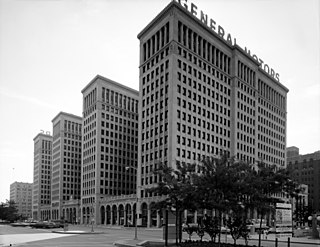
The General Motors streetcar conspiracy refers to the convictions of General Motors (GM) and related companies that were involved in the monopolizing of the sale of buses and supplies to National City Lines (NCL) and subsidiaries, as well as to the allegations that the defendants conspired to own or control transit systems, in violation of Section 1 of the Sherman Antitrust Act. This suit created lingering suspicions that the defendants had in fact plotted to dismantle streetcar systems in many cities in the United States as an attempt to monopolize surface transportation.

Frank Julian Sprague was an American inventor who contributed to the development of the electric motor, electric railways, and electric elevators. His contributions were especially important in promoting urban development by increasing the size cities could reasonably attain and by allowing greater concentration of business in commercial sections. He became known as the "Father of Electric Traction". Demonstrating an aptitude for science and mathematics, Sprague secured an appointment to the U.S. Naval Academy in 1874 and, after graduation in 1878 and 2 years at sea, resigned to pursue his career in electrical engineering.
The St. Louis Car Company was a major United States manufacturer of railroad passenger cars, streetcars, interurbans, trolleybuses and locomotives that existed from 1887 to 1974, based in St. Louis, Missouri.
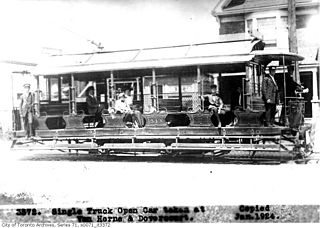
The Toronto Railway Company (TRC) was the operator of the streetcar system in Toronto between 1891 and 1921. It electrified the horsecar system it inherited from the Toronto Street Railway, the previous operator of streetcar service in Toronto. The TRC was also a manufacturer of streetcars and rail work vehicles, a few of which were built for other streetcar and radial operators.
The Toronto Suburban Railway was a Canadian electric railway operator with local routes in west Toronto, and a radial (interurban) route to Guelph.

The West End Street Railway was a streetcar company that operated in Boston, Massachusetts and several surrounding communities in the late nineteenth century.

The Ottawa Car Company was a builder of streetcars for the Canadian market and was founded in Ottawa, Ontario, in 1891 as an outgrowth of the carriage building operations of William W. Wylie. Its plant was located at Kent and Slater Streets, a short distance from Parliament Hill. The company was a subsidiary of Ottawa Electric Railway, in turn controlled by Ahearn & Soper.

Thomas Ahearn, PC was a Canadian inventor and businessman. Ahearn, a native of Ottawa, Ontario, was instrumental in the success of a vast streetcar system that was once in Ottawa, the Ottawa Electric Railway, and was the first chairman of Canada's Federal District Commission in 1927. He held several patents related to electrical items and headed companies which competed for decades with Ottawa Hydro as providers for electricity in Ottawa. Ahearn co-founded the Ottawa Car Company, a manufacturer of streetcars for Canadian markets.

Streetcars in Washington, D.C. transported people across the city and region from 1862 until 1962.

The Presidents' Conference Committee Car was a streetcar used by the Toronto Transportation Commission and the Toronto Transit Commission. The PCC streetcar was designed by the Presidents' Conference Committee, a group of transit operators in the United States and Canada.

Toronto and Scarboro' Electric Railway, Light and Power Company was established in August 1892 to provide street railway service to the Upper Beaches district within the City of Toronto, Ontario and to the neighbouring Township of Scarborough. Except for two branches, the line ran as a radial along Kingston Road.

The Third Avenue Railway System (TARS), founded 1852, was a streetcar system serving the New York City boroughs of Manhattan and the Bronx along with lower Westchester County. For a brief period of time, TARS also operated the Steinway Lines in Long Island City.
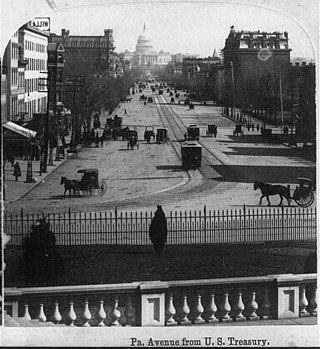
The Washington and Georgetown Railroad Company was the first streetcar company to operate in Washington, D.C., United States. It was incorporated and started operations in 1862, using horse-drawn cars on tracks between Georgetown and the Navy Yard. Two additional lines ran on 7th Street NW/SW and 14th Street NW. In 1890, it switched to cable cars. On September 21, 1895, the company was purchased by the Rock Creek Railway and the two formed the Capital Traction Company.
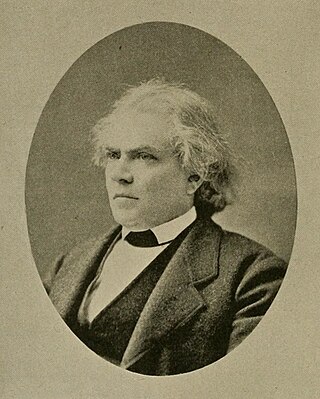
John G. Stephenson, an American coachbuilder, invented and patented the first streetcar to run on rails in the United States. Stephenson also designed the New York and Harlem Railroad which was formally opened on 26 November 1832. Twelve days later a horse-drawn streetcar built at Stephenson's works and named John Mason after the president of the railroad company, started the public service. Stephenson is therefore remembered as the creator of the tramway. Stephenson was the great-grandfather of Alan Stephenson Boyd, the first United States Secretary of Transportation.

Streetcars in St. Louis, Missouri operated as part of the transportation network of St. Louis from the middle of the 19th century through the early 1960s. During the first forty years of the streetcar in the city, a variety of private companies operated several dozen lines. In 1898, the City of St. Louis passed a Central Traction Bill that required franchises for streetcar companies. United Railways quickly consolidated most St. Louis streetcar companies. Only St. Louis Suburban remained independent. It was acquired by United Railways in 1906. United Railways sank into receivership which was resolved only in 1924. It was reorganized as St. Louis Public Service Company in 1927, and became Bi-State in 1963. St. Louis Public Service Company served both the city of St. Louis and neighboring St. Louis County, Missouri. Other private companies, such as those serving the Metro East region or St. Charles, Missouri, continued separate operations. Starting in the 1930s and continuing through the 1960s, St. Louis Public Service ended all streetcar service, while other regional operators also ended their services.
Ottawa Electric Railway Company was a streetcar public transit system in the city of Ottawa, Canada, part of the electric railway streetcars that operated between 1891 and 1959. Ottawa once had tracks through downtown on Rideau Street, Sparks Street and others, and extended outside of the downtown core to provide services that helped form communities such as Westboro, Old Ottawa South and The Glebe. Prior to this, starting in 1866, public transportation was provided by Ottawa City Passenger Railway Company, a horse-drawn tram service. The O.E.R. was taken over by the Ottawa Transportation Commission in 1948, which was itself succeeded by OC Transpo in 1973.
HouTran was a public transportation company that served the Houston area. While its last iteration was publicly owned by the City of Houston, it was privately owned throughout the vast majority of its existence. Throughout several name changes and ownership acquisitions, the company's modes of operation ranged from mule-drawn streetcars to electrified streetcars, and finally to busses. In 1979, it was succeeded by the Metropolitan Transit Authority of Harris County, a state-authorized local transit authority, when it was purchased by that agency as the basis for its then new transit system.
The Rochester Railway Company operated a streetcar transit system throughout the city of Rochester from 1890 until its acquisition by Rochester Transit Corp. in 1938. Formed by a group of Pittsburgh investors, the Rochester Railway Company purchased the Rochester City & Brighton Railroad in 1890, followed by a lease of the Rochester Electric Railway in 1894. The Rochester and Suburban Railway was leased in 1905, extending the system's reach to Irondequoit and Sea Breeze. Rochester Railways was acquired by the Mohawk Valley Company, a subsidiary of the New York Central Railroad set up to take control of electric railways in its territory. In 1909 the holdings of the Mohawk Valley Company were consolidated as the New York State Railways.

Sidney Howe Short was an electrical engineer, inventor, physicist, professor and businessman. He is known for the development of electric motors and electric railway equipment. His inventions were so successful that even his competitors dubbed him "The Trolley King". He also developed telephone equipment much like that of Alexander Graham Bell. As a businessman he was president, key engineer, or advisor of different companies related to electrical equipment. It is claimed that he had nearly as many electrical innovations as Thomas Edison.
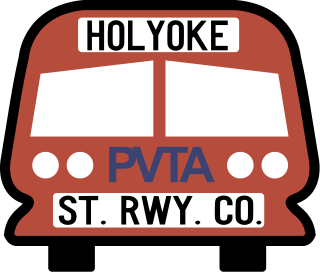
The Holyoke Street Railway (HSR) was an interurban streetcar and bus system operating in Holyoke, Massachusetts as well as surrounding communities with connections in Amherst, Belchertown, Chicopee, Easthampton, Granby, Northampton, Pelham, South Hadley, Sunderland, Westfield, and West Springfield. Throughout its history the railway system shaped the cultural institutions of Mount Tom, being operator of the mountain's famous summit houses, one of which hosted President McKinley, the Mount Tom Railroad, and the trolley park at the opposite end of this funicular line, Mountain Park.















